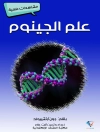Essay from the year 2002 in the subject Biology – Genetics / Gene Technology, grade: 1.1 (A), Oxford University (New College), language: English, abstract: Discuss the distribution of genetic diversity
found in human and chimpanzee populations
by
Christine Langhoff
In the mid-1980s one of the most important studies by Sibley and Ahlquist on our relationship to apes and monkeys found that our closest relatives are the chimpanzees and the bonobos. The study of genetic diversity within both human and chimpanzee populations has been of major interest as researchers have been and are still trying to find out about the differences in genetic diversity between the two otherwise so closely related species. The genetic diversity refers to the amount of genetic variation found in a population. It has been discovered that chimpanzees have a greater total genetic diversity than humans, but that there are exceptions such as in the major histocompatibility complex in which chimpanzees display a low genetic diversity. I am going to explore how the total genetic diversity is surveyed in and distributed among human and chimpanzee populations and I am going to compare their levels of total diversity. I am also going to explore whether different types of polymorphism reveal the same patterns of distribution within and among populations.
There are both experimental and statistical methods for studying genetic diversity within and between populations. The experimental methods include electrophoresis and the Polymerase Chain Reaction. Electrophoresis has mainly been used for proteins (primarily for enzymes) as it is easily determined when an enzyme has an amino acid replacement resulting in a difference in its overall mobility (i.e. an allozyme) because it will have an altered electrophoretic mobility. DNA restriction fragments can also be separated by electrophoresis and by using the Southern Blot method these can be made visible in order to be studied. Genetic differences resulting in the presence or absence of restriction sites can be identified because they change the length of characteristic restriction fragments. The polymerase chain reaction (PCR) is another method used in surveying the genetic diversity as it is extremely useful for amplifying specific DNA sequences such as the many DNA polymorphisms that are studied. (Hartl and Clark, 1997)
[…]












